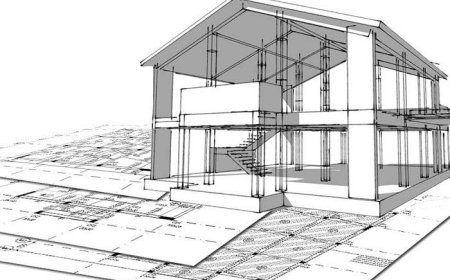Stages involved in a typical real estate transaction from start to end
Discover the complete journey of a real estate transaction from initial planning to final closing. Learn the key stages, tips for buyers and sellers, and how to avoid common pitfalls.

Buying or selling a property is a major financial decision, and understanding the process helps avoid confusion and delays. A real estate transaction involves multiple steps, each crucial to successfully transferring ownership. This guide breaks down the stages from start to finish, offering a clear view of what to expect and how to prepare.
1. Pre-Planning and Budgeting
The real estate process begins long before the actual transaction. Buyers should assess their financial position, determine how much they can afford, and get pre-approved for a mortgage if financing is required. Sellers, on the other hand, need to evaluate the market and set a realistic price.
For Buyers:
-
Calculate affordability.
-
Check credit score.
-
Explore loan options.
For Sellers:
-
Research market value.
-
Plan repairs or staging.
-
Decide on timing.
2. Hiring a Real Estate Agent
A professional agent can streamline the entire process. Buyers need an agent to find suitable properties and negotiate offers. Sellers rely on agents to market the property effectively and manage buyer inquiries.
Why its important:
-
Access to MLS listings.
-
Market knowledge.
-
Skilled negotiator.
3. Property Search and Marketing
For buyers, this stage involves searching for homes, visiting open houses, and narrowing down options based on location, budget, and amenities. Sellers, with the help of agents, list their property, stage it, and market it through photos, online platforms, and advertisements.
Key Actions:
-
Schedule home visits.
-
Evaluate neighborhoods.
-
For sellers: Create appealing listings.
4. Making and Accepting an Offer
Once a buyer selects a property, they submit a formal offer. The seller can accept, reject, or counter the offer. Negotiation is common until both parties agree on terms.
Important considerations:
-
Offer amount.
-
Closing date.
-
Contingencies (e.g., financing, inspection).
5. Home Inspection and Appraisal
After offer acceptance, a home inspection is scheduled. This identifies any structural or mechanical issues. Simultaneously, the lender arranges an appraisal to ensure the property value matches the loan amount.
Outcomes may include:
-
Requesting repairs.
-
Renegotiating price.
-
In rare cases, walking away.
6. Finalizing the Mortgage
If financing is involved, the buyer works closely with the lender to finalize the mortgage. This includes submitting documents, undergoing underwriting, and receiving a loan commitment.
Documents Needed:
-
Income proof.
-
Employment history.
-
Credit and asset details.
7. Title Search and Insurance
The title company conducts a search to ensure there are no legal issues or claims against the property. Title insurance is also purchased to protect both the buyer and the lender from potential future disputes.
Checks for:
-
Liens.
-
Ownership records.
-
Legal encumbrances.
8. Preparing for Closing
In the days leading up to closing, both parties finalize paperwork, and the buyer conducts a final walkthrough of the property to ensure everything is in order.
Final checklist:
-
Verify agreed repairs.
-
Transfer utilities.
-
Prepare funds for down payment and closing costs.
9. Closing Day
All parties meet (physically or virtually) to sign the necessary legal documents. The buyer pays the remaining costs, and the seller receives the funds. Ownership is officially transferred.
At closing:
-
Sign the deed and loan docs.
-
Receive the keys.
-
Transfer title.
10. Post-Closing Responsibilities
After the deal closes, the buyer should update their address, review home warranties, and keep all closing documents safe. The seller should confirm final payment and notify tax authorities if needed.
New homeowner tasks:
-
Change locks.
-
Setup mortgage payments.
-
Maintain the property.
Conclusion
Understanding the stages involved in a typical real estate transaction from start to end helps you stay informed and in control throughout the process. Whether youre buying your first home or selling an investment property, each step plays a vital role in ensuring a smooth and legally sound transaction. Being prepared reduces stress and increases the likelihood of a successful deal.
Important Links
Bayshore Road Condo Projects Details
How to Buy Your First Condo in Singapore
Steps to Buying a House for the First Time
How to Buy a House with Bad Credit and Low Income
How to Invest in Rental Properties in 2025
Bayshore Road Condo Projects Details
































